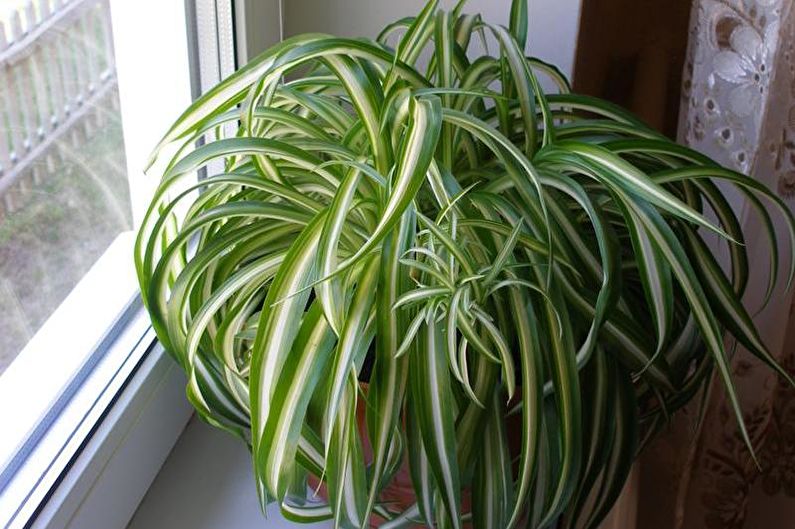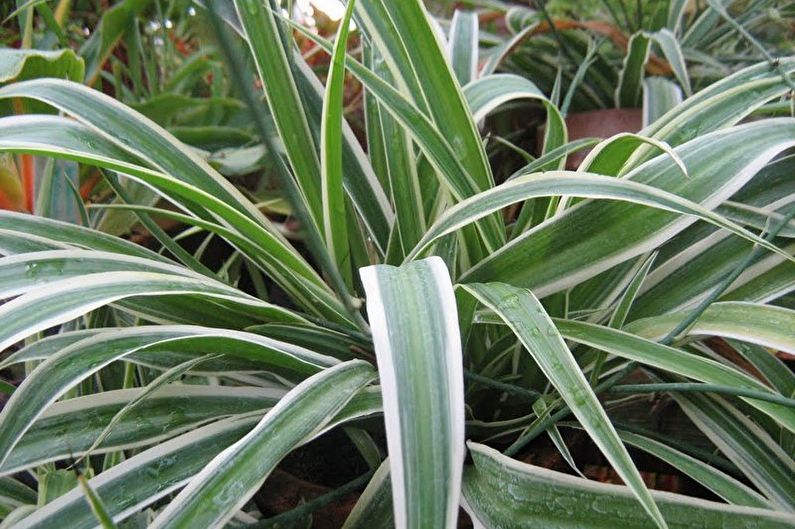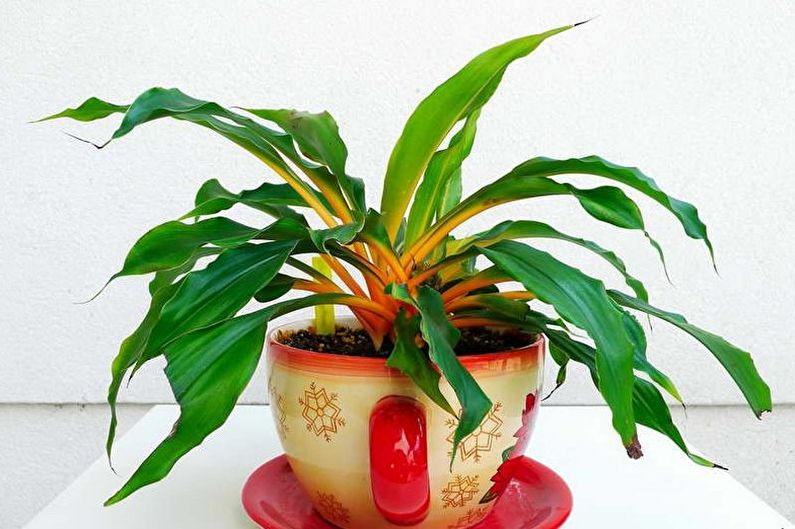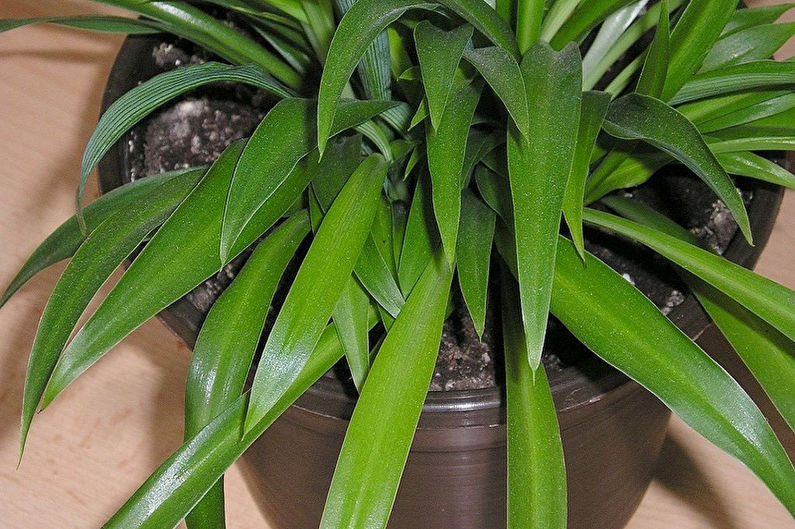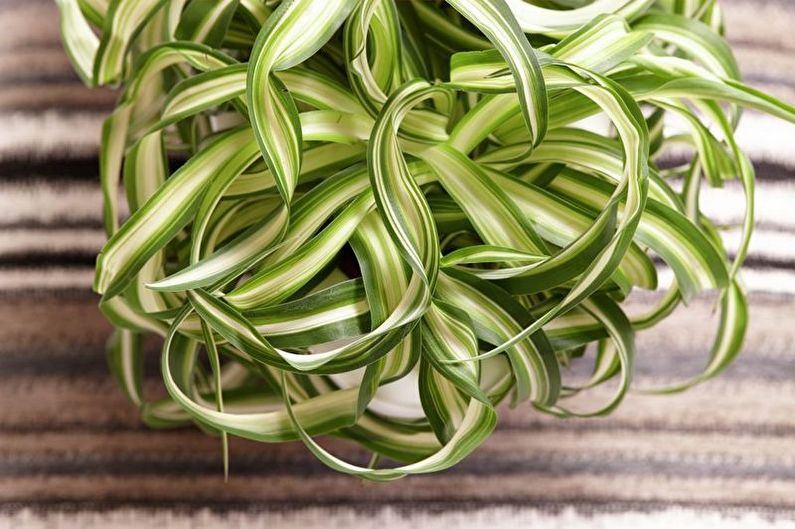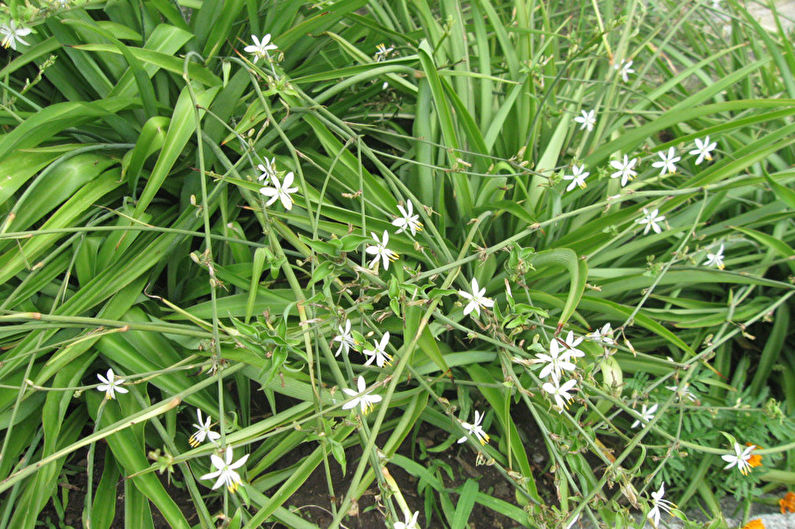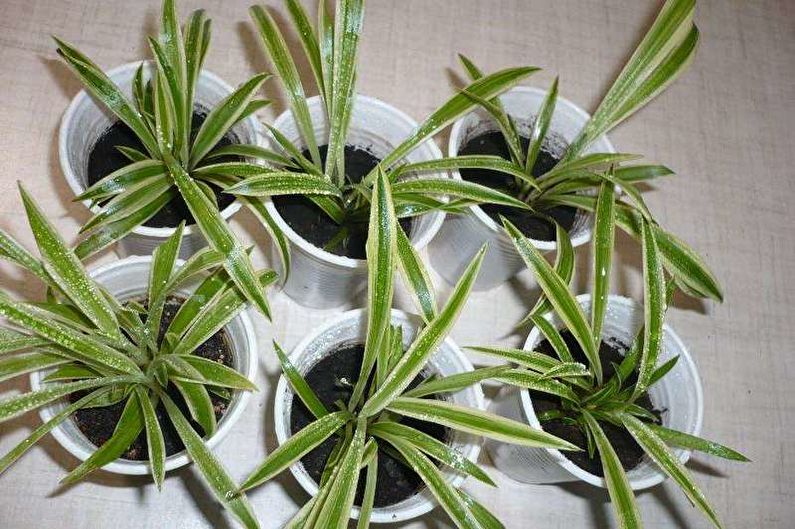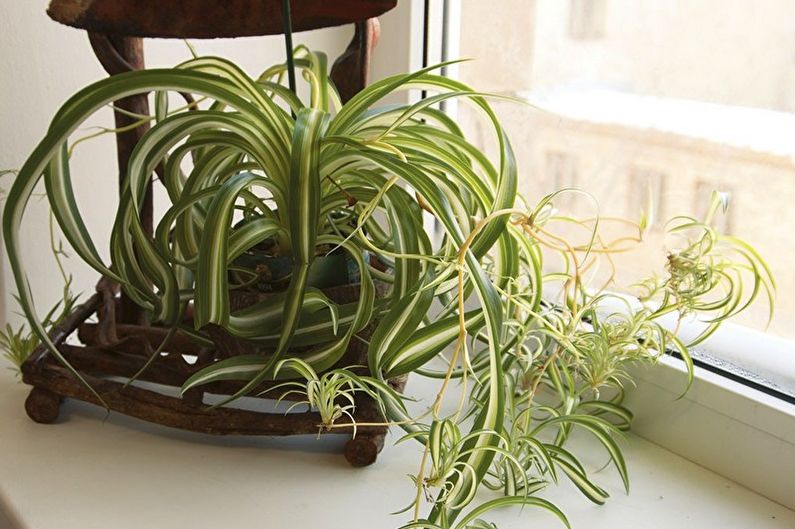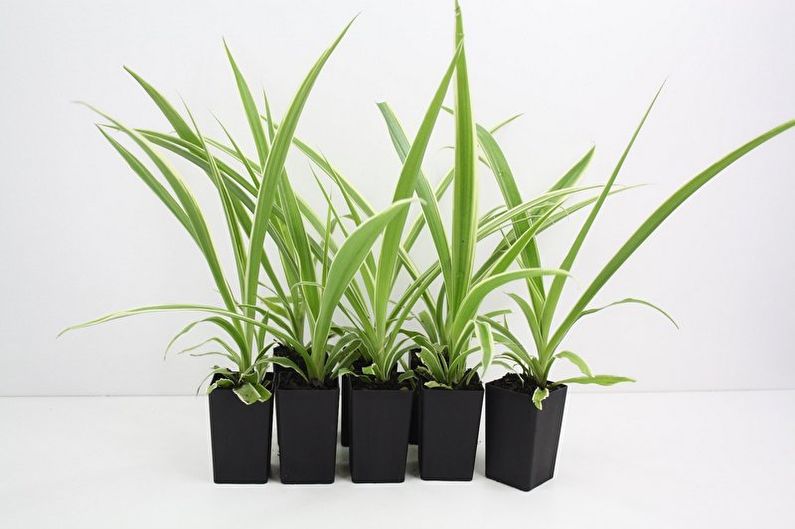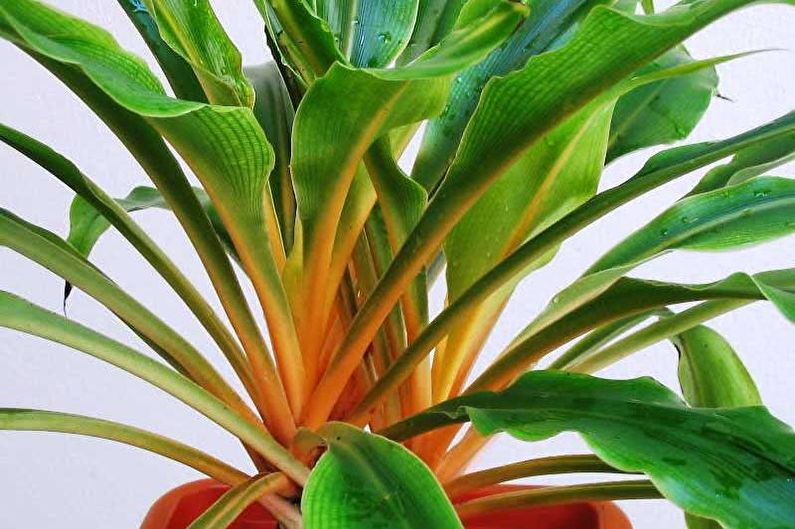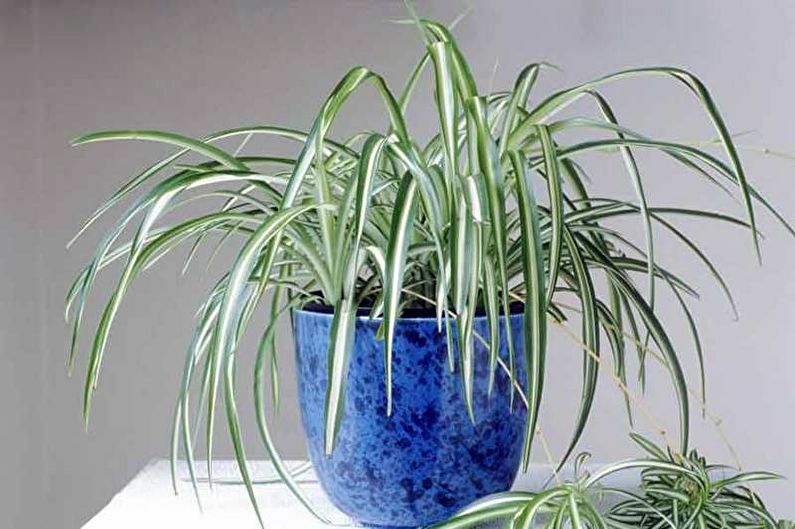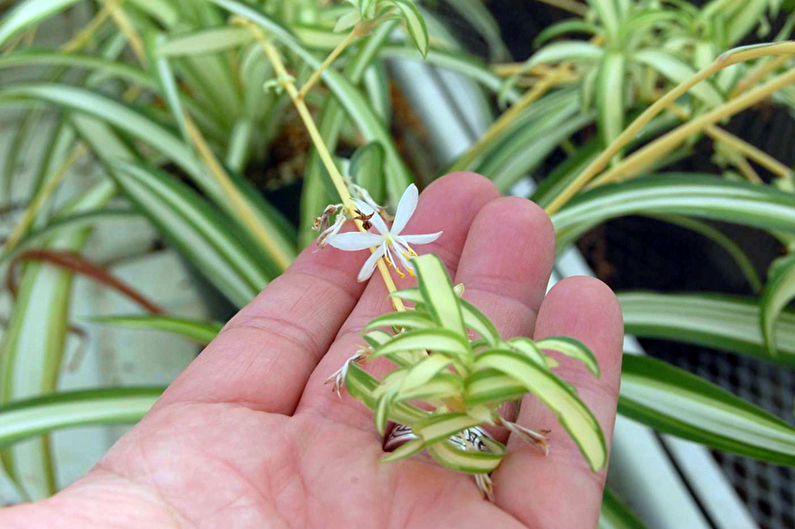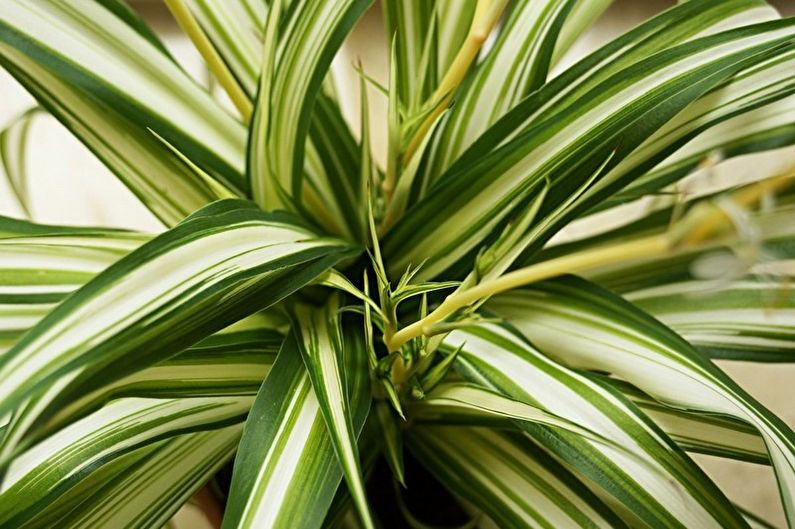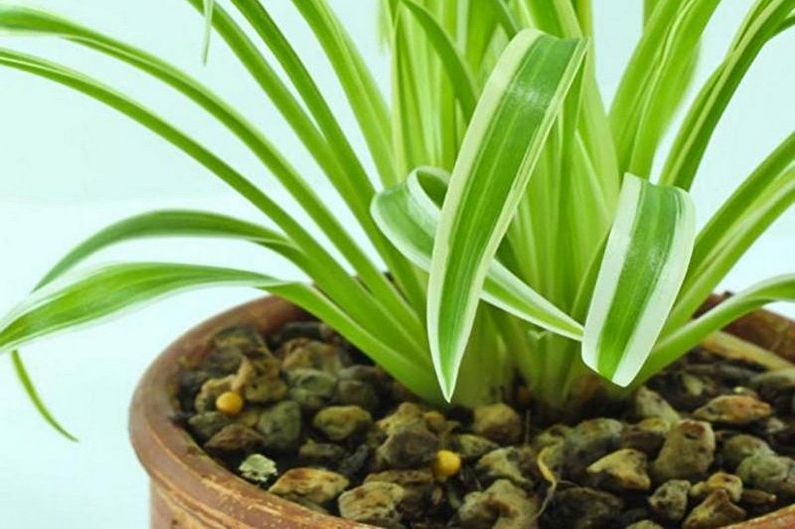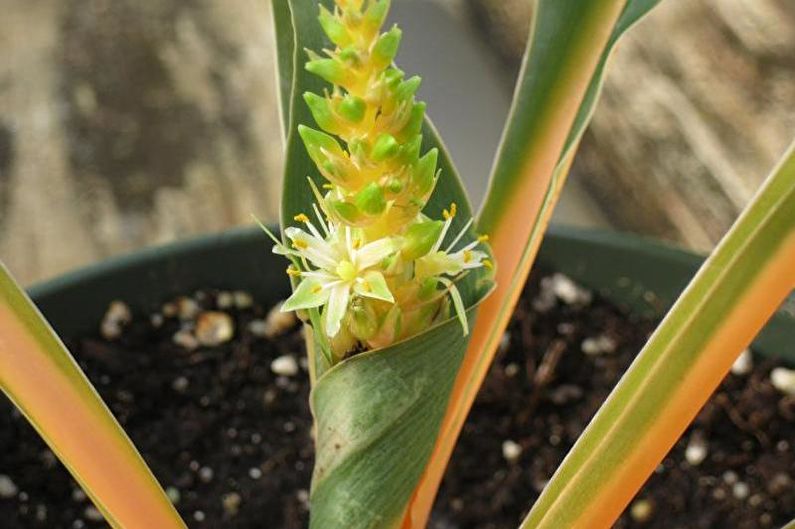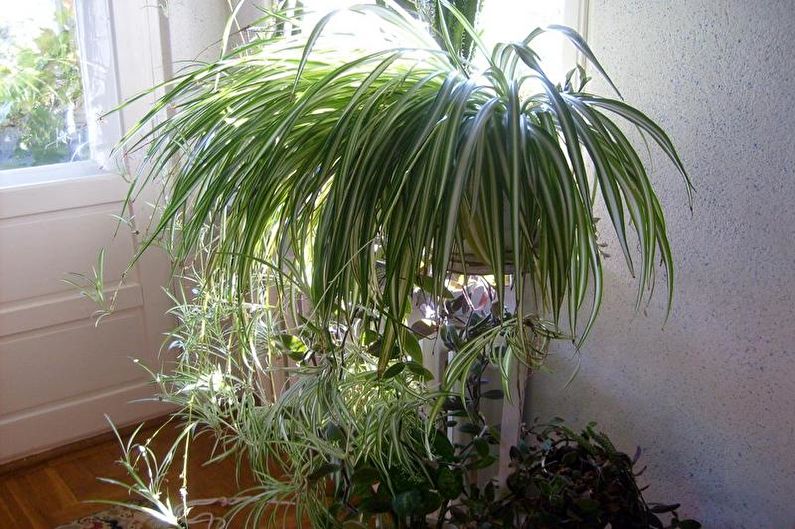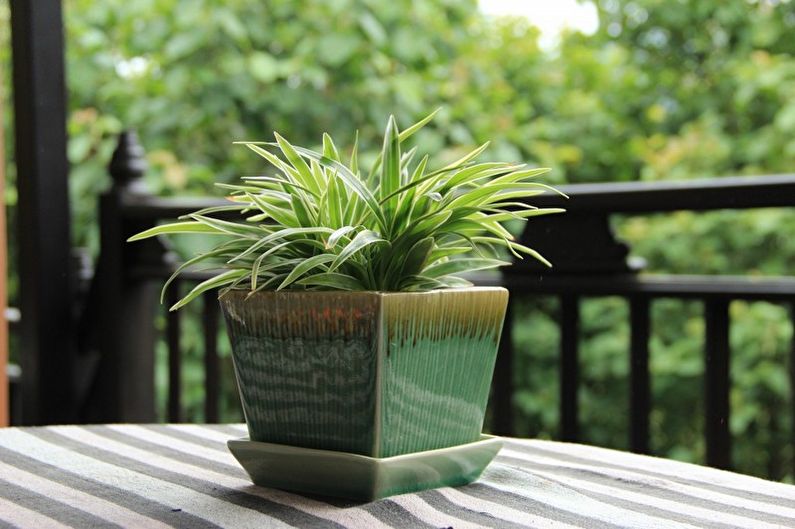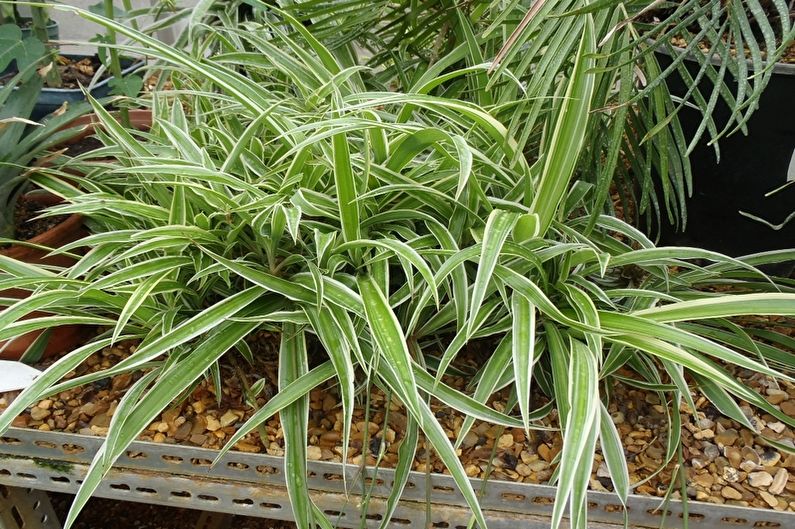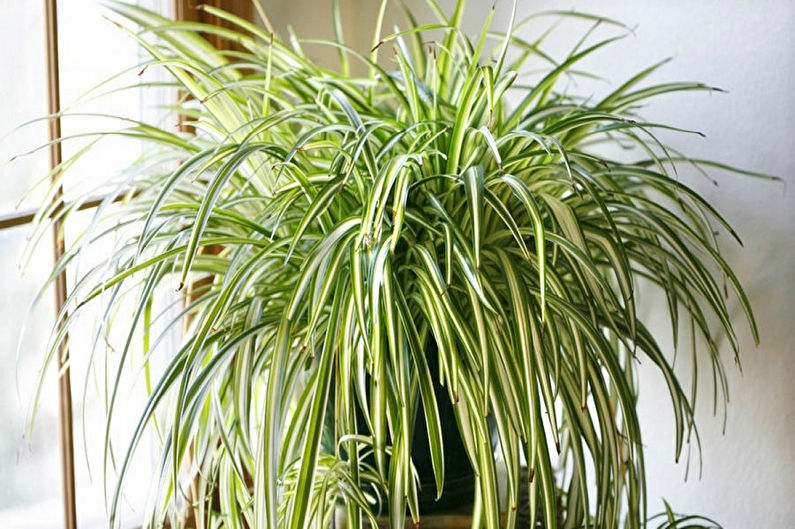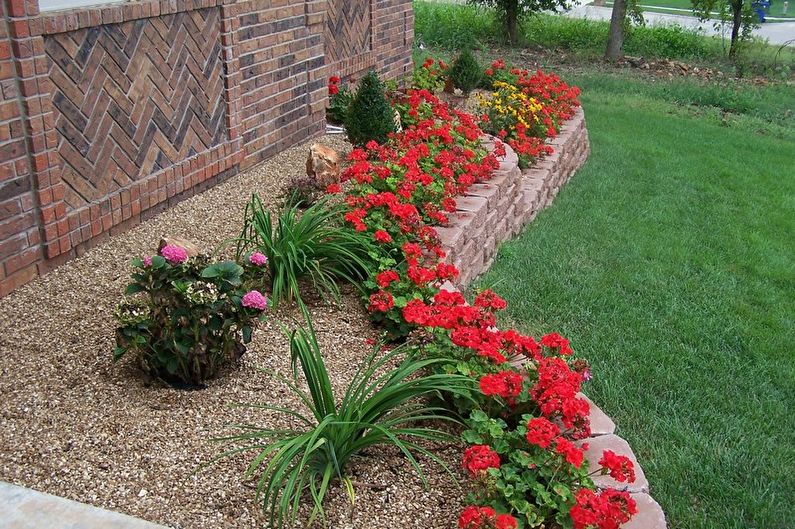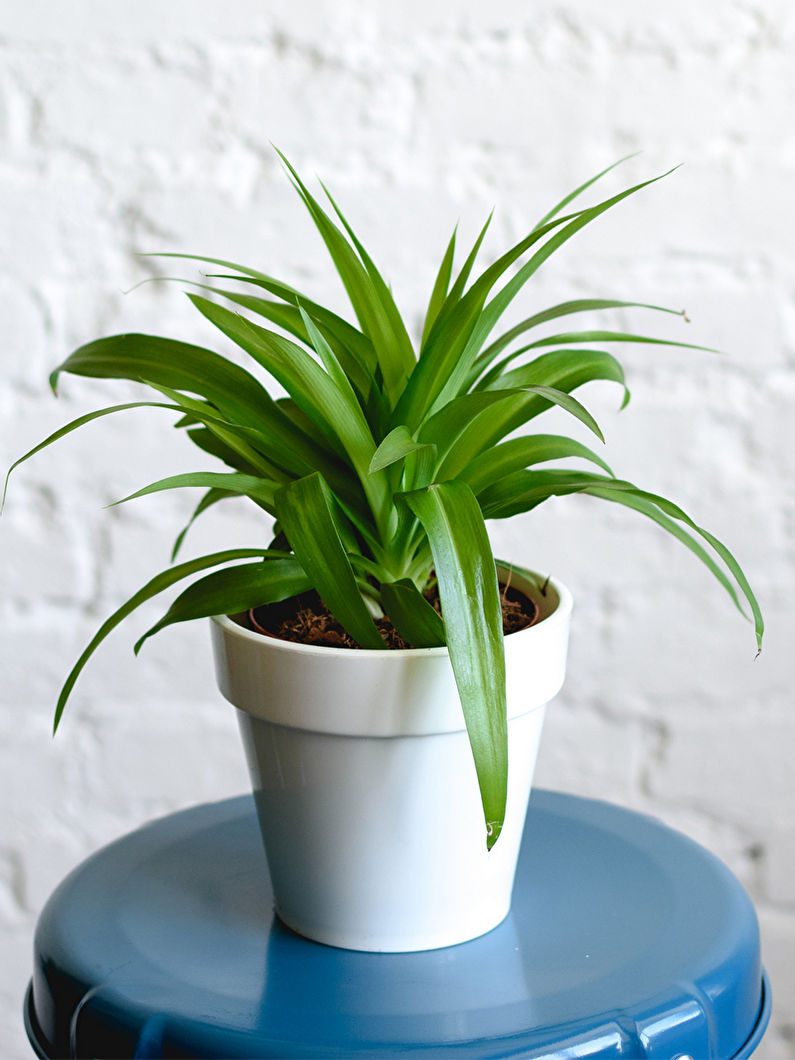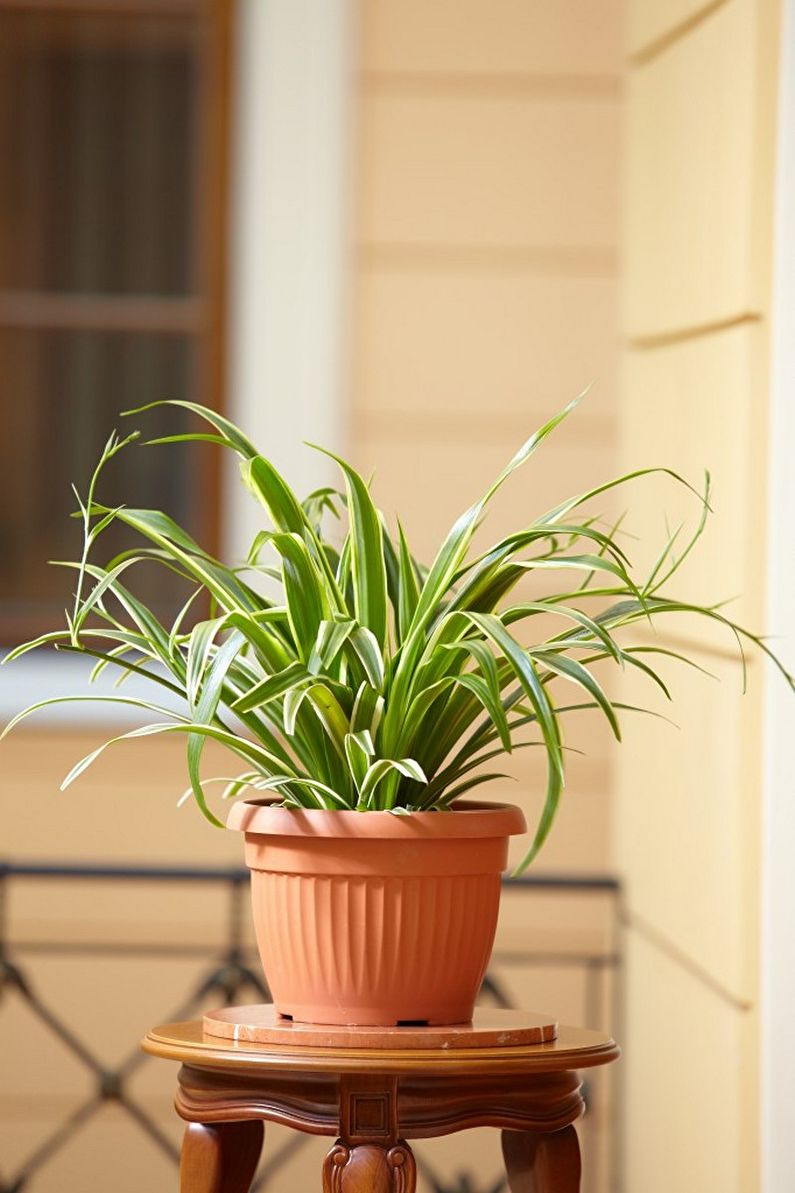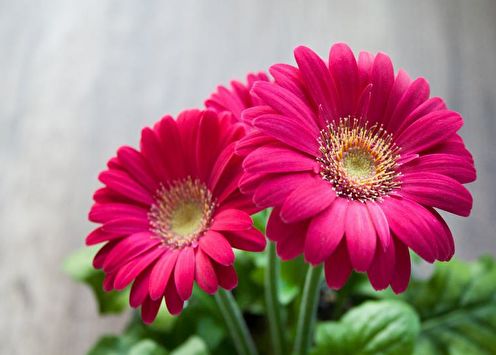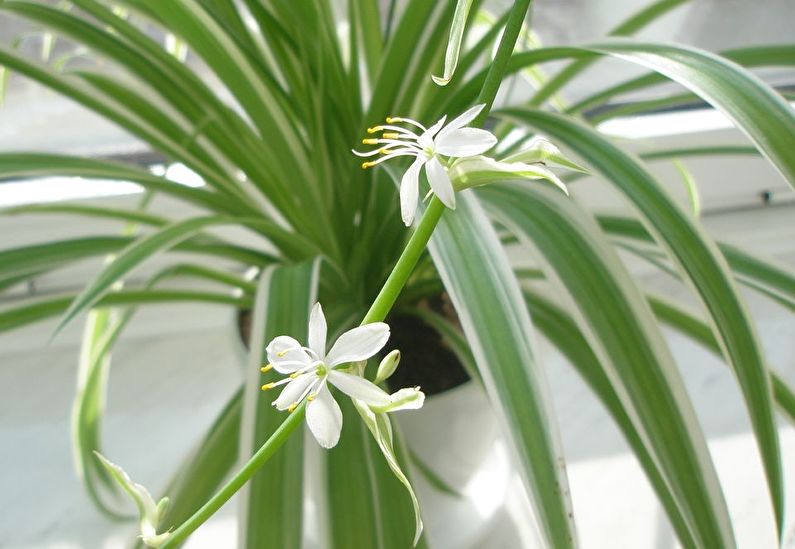
Chlorophytum is a popular home herbaceous plant. Ten years ago, he met in almost any home. Now this is not so common, but he still remains a universal favorite. The secret of such popularity is very simple: chlorophytum is unpretentious in leaving, quickly grows and takes root. Even inexperienced flower growers can easily cope with it. Because of the long drooping pointed leaves, he was even nicknamed the "green spider." Inflorescences resemble white stars on high shoots.
General characteristics
Chlorophytum came to us from South Africa and South America. There are more than two hundred varieties of this plant. In nature, it settles on the branches of trees, is fixed on the bark and is an essential component of forest cover.
This is a perennial herb up to half a meter high. He has practically no stalk, and basal leaves grow almost from the ground. Rhizomes are white, thin, cord-shaped shoots that are firmly rooted in the ground due to elongated tubers. Moisture accumulates in these tubers, which saves the flower during drought.
Chlorophytum was first described in 1794. It was brought to Europe by the end of the 19th century, and it instantly spread everywhere. In nature, it thrives in warm tropical regions and is scattered throughout the world. This is the reason for such a number of different species. The leaves of the chlorophytum are linear, smooth, bright green or variegated. The average length is from 15 to 60 cm. The sinewy core shows well in the middle.
Leaves can be short or sessile. Flowers appear in the summer. At home, chlorophytum can bloom several times a year. The buds are grouped into knots. When they fade, babies develop on the stems. A rosette is formed in place, from which aerial roots sprout. As soon as they touch the ground, they take root almost instantly. There are fruits: dry oblong boxes with three sections for seeds.
Properties are still not fully understood. But chlorophytum definitely moisturizes overdried air, brings freshness to the room and creates a comfortable microclimate. Its antiseptic effect is also known. It effectively destroys the dangerous bacteria around it.
Volatile eliminate harmful vapors: tobacco smoke, carbon monoxide, formaldehydes. The atmosphere in the room becomes much healthier. In addition, the flower is completely safe for pets. Cats can even eat it instead of special grass to cleanse the body.
Finally, he looks good and bright, fills the room with paints and harmoniously fits into the interior.


Types of chlorophytum
List all types of chlorophytum is almost impossible. They cannot even be accurately calculated, because different sources provide different data. On average, the category includes more than 200 species of plants, but only some of them are decorative. They are bred in houses and apartments. These include:
Chlorophytum crested. Bright green, with a symmetrical rosette and narrow long leaves. The diameter of the outlet is up to 50 cm. High flowering arrows sprout from it. Visually, an adult bush resembles a fountain. There are several subspecies: vittatum - with a white strip along the leaf, laxum - with variegated leaves with a whitish fringing, variegat - with silver fringing around the perimeter of the light sheet and the ocean - with a spiral arrangement of leaves.
Chlorophytum Cape. It has long, up to 60 cm, light leaves up to 3 cm wide. Rosettes are very dense. Another feature is short flower stems. Such a plant propagates more often by division, and not by the method of forming daughter rosettes typical of chlorophytum. This species is larger than others and can reach 80 cm in height.
Chlorophytum winged or orange. This is a low plant with relatively wide oval leaves. Petioles are short and fleshy. The color is dark, and the stalk and vein are orange. The inflorescence resembles a corncob and forms on a short peduncle. It most resembles tropical counterparts. The most beautiful varieties are Fire Flash and Green Orange.
Chlorophytum Bonnie. This is a small curly chlorophytum with spiral leaves. In the center of the plate is a wide white stripe.
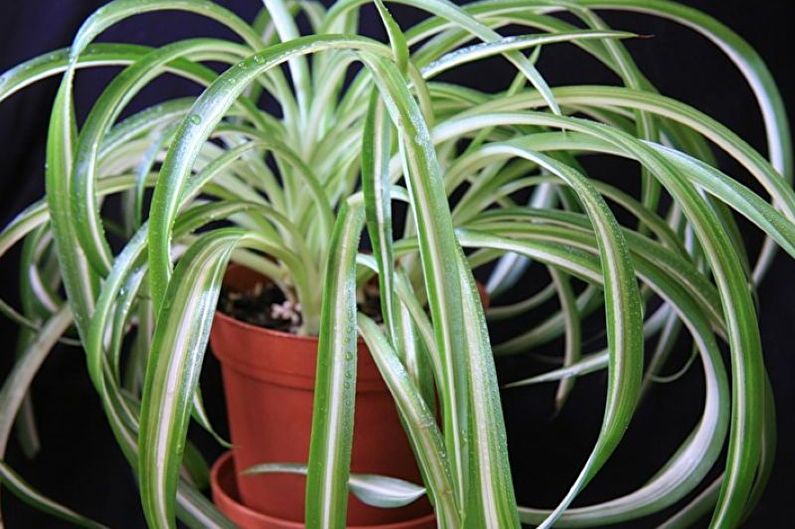
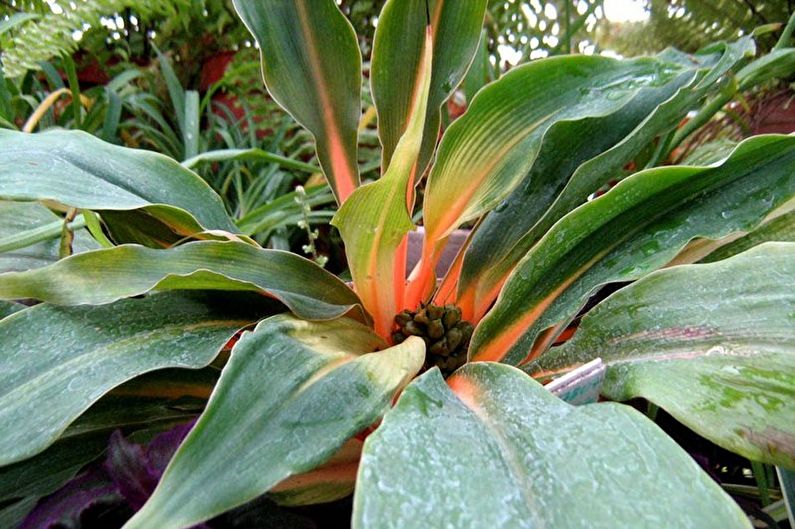
Chlorophytum Care
Caring for chlorophytum is very easy. He needs almost nothing. Under comfortable conditions, it is not whimsical at all, grows magnificent, grows green and blooms regularly.
The more bright daylight, the better, but you will need protection from direct sunlight. With a lack of sun, the flower does not die, but grows dull and grows poorly. It is better to place chlorophytum near windows in the light or in partial shade. Ideally, these are not southern windows under scorching rays.
Ideal temperature is about + 25C. In winter - up to + 20C. Do not allow subcooling below + 10C. The colder the lower the humidity. Chlorophytum loves spraying and bathing. If the air is too dry, the tips of the leaves dry out. The same thing happens with a battery or heater.
Plan planting, transplanting and breeding for February or March. A young and actively growing flower is transplanted every year. Adults and mature plants - once every few years. When transplanting, clean the root of the clods of earth and remove rotten and damaged fragments. After all the procedures, water the plant and leave it in the shade.
Keep in mind that chlorophytum needs a large volumetric pot. The flower has a powerful branched rhizome that needs a place. But at the same time, you should not take too much capacity "for growth": the root system will seek to fill the volume to the detriment of the ground part.
Water the plant abundantly in summer and spring, but do not abuse. Allow the soil to dry at least halfway. Chlorophytum stores moisture in the tubers of the rhizome, so that it will be enough. In no case do not allow water to stagnate and empty the pan 20 minutes after watering.
An ideal neutral or slightly acidic soil mixture consists of turf and leaf soil, sand, humus and crushed coniferous bark in a ratio of 2: 1: 1: 1: 1. As fertilizers, a mineral complex solution for deciduous plants can be periodically added to the soil. It is best to do this in March-August, 1-2 times a month.
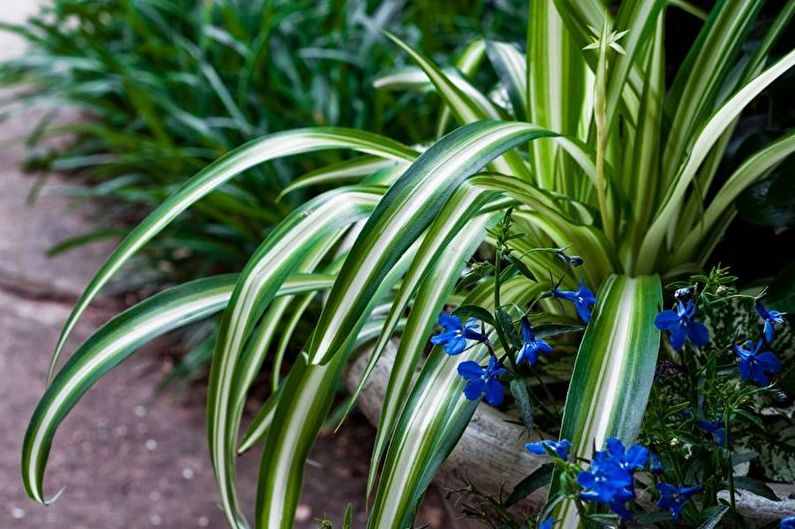
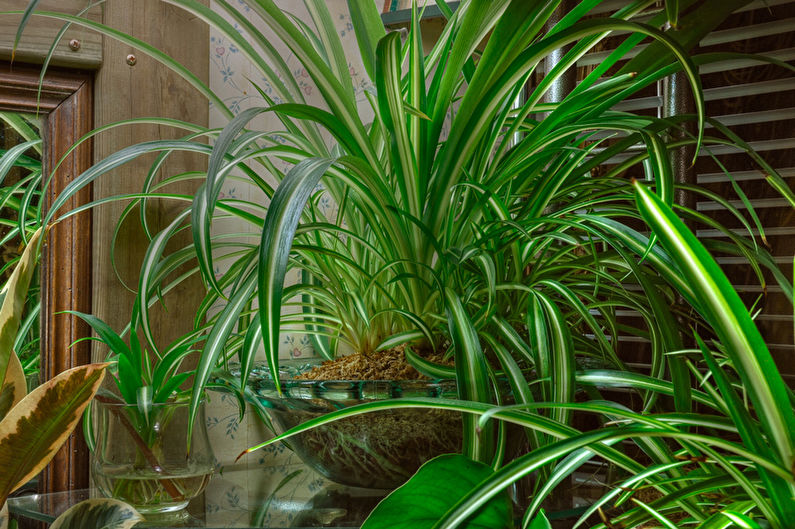
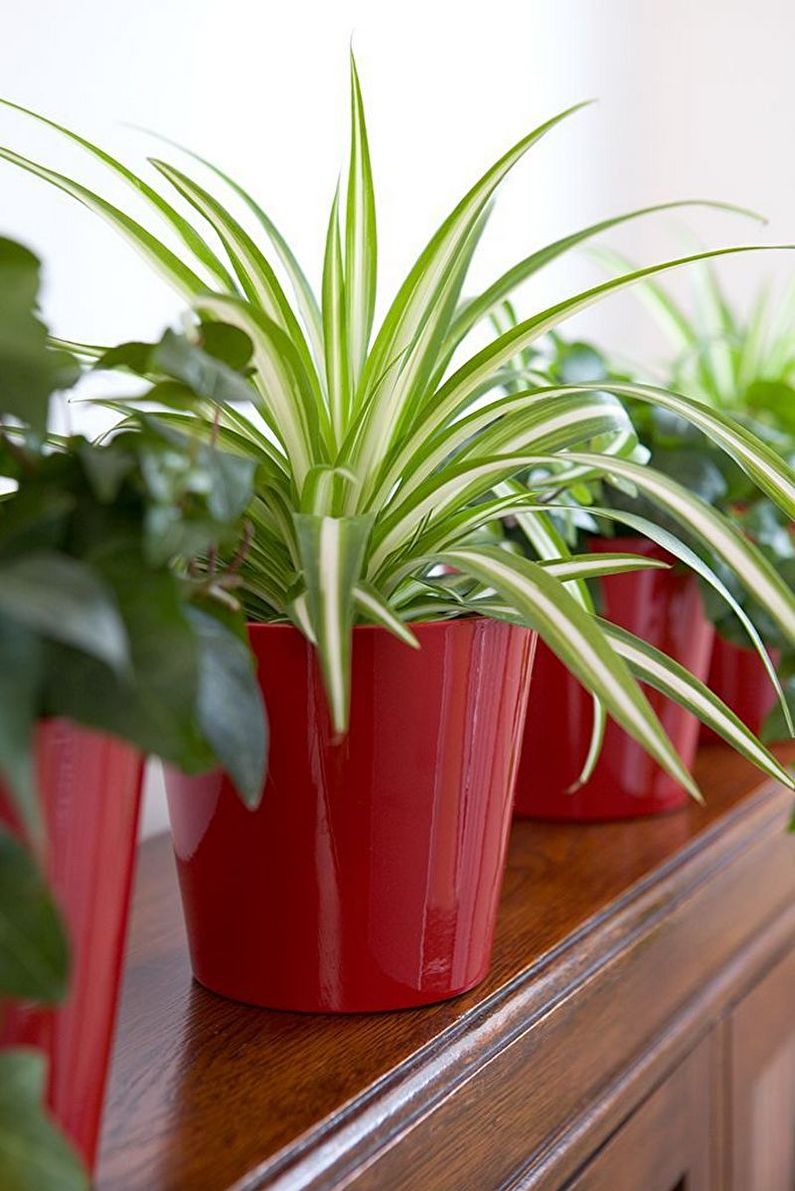
Transplantation and reproduction
Chlorophytum multiplies very easily. For this, practically nothing is needed. Of course, you can independently grow a flower from seeds, or you can use simple vegetative methods. Options are as follows:
Seeds Keep in mind that they have a fairly low germination rate, only 25–40%. You can buy them in a special store or assemble yourself, but in the latter case, you will first have to be puzzled by artificial pollination of the flower. Plant chlorophytum better in early spring. Leave the seeds for a day in a wet cloth. After that, the seeds are buried in the soil by about 7 mm. Sprinkle the surface with water and cover with foil. Leave the improvised greenhouse warm and in the sun. Temperature - up to 25C. Sunlight is diffused. Ventilate daily and periodically spray the crop. The flower emerges unevenly after about 5 weeks. You need to remove the film gradually, at first - not for long, in order to accustom weak seedlings to open air. When several real strong leaves appear, the seedling can be transferred to a separate pot.
Rooting outlets. Children that form on peduncles are small rosettes with aerial roots. It is enough to dig them a little into the soil, and nature will do its job. Children are separated from the escape when they are already rooted. The second option is to cut off the socket and briefly put it in a container with a small amount of water. When the root is formed, it can be transplanted into the soil.
Division. Large adult plants can be separated when transplanted. It is better to do this in the spring and with flowers that are older than 4 years. Carefully cut the rhizome with a sharp blade. Sprinkle the cut with charcoal for disinfection and protection. Immediately plant the plants in separate pots. Usually even small parts with a small root take root successfully. This is one of the main properties of chlorophytum.
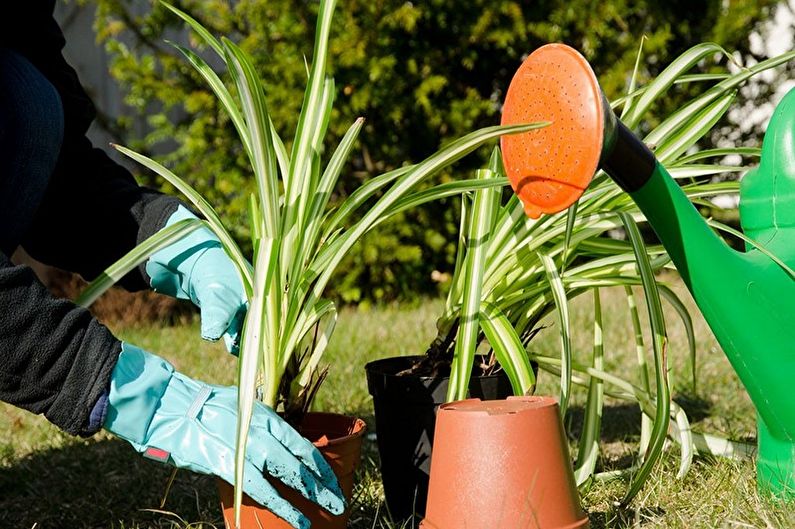
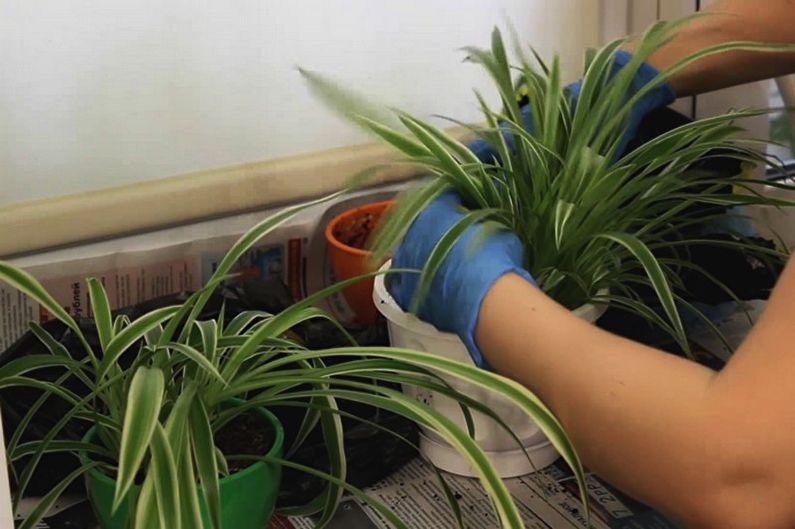
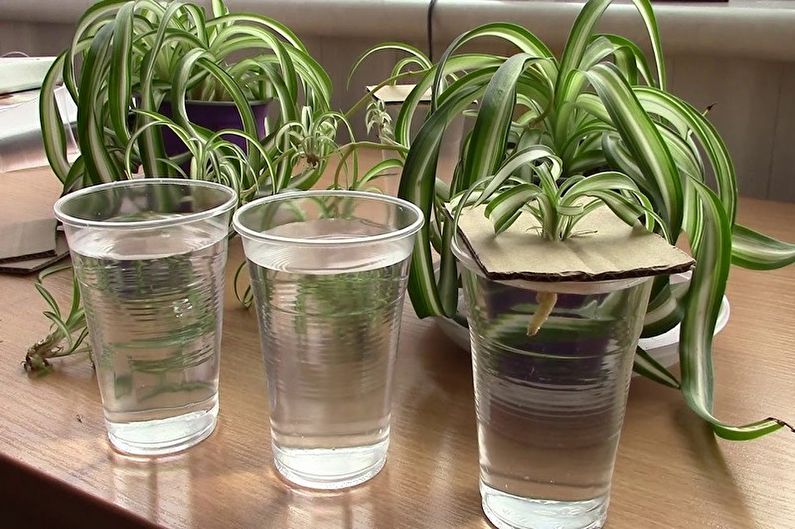
Pest and Disease Control
If you properly care for chlorophytum, he is not afraid of diseases and parasites. If the humidity is too high, a fungus may develop. The roots rot, spots appear on the leaves, powdery mildew is visible. In this case, replace the soil, treat with fungicide and cut off all damaged areas. The flower is quickly restored, so it is not scary for him.
On the street, chlorophytum is attacked by parasites: worms, spider mites, scale insects. Therefore, leaves need to be regularly inspected and treated with insecticides and acaricides.
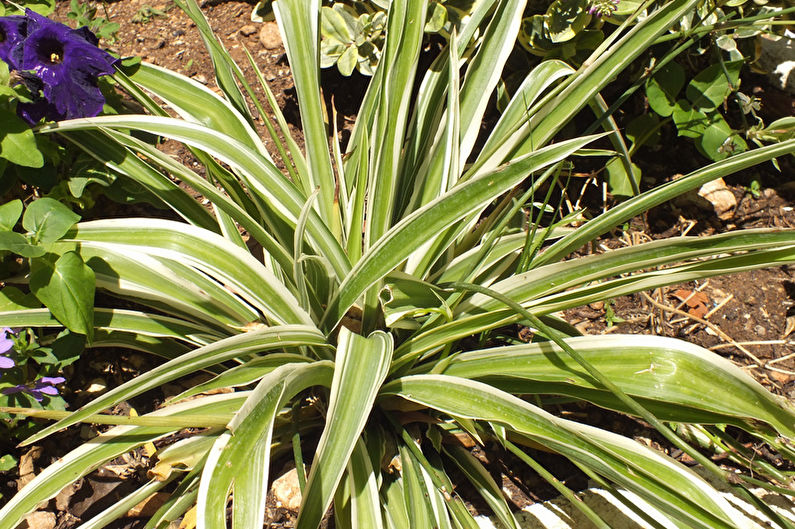
Chlorophytum - photo
To find out what chlorophytum looks like, check out our selection of photos. This will help to navigate the choice and understand where to put a new pet.
